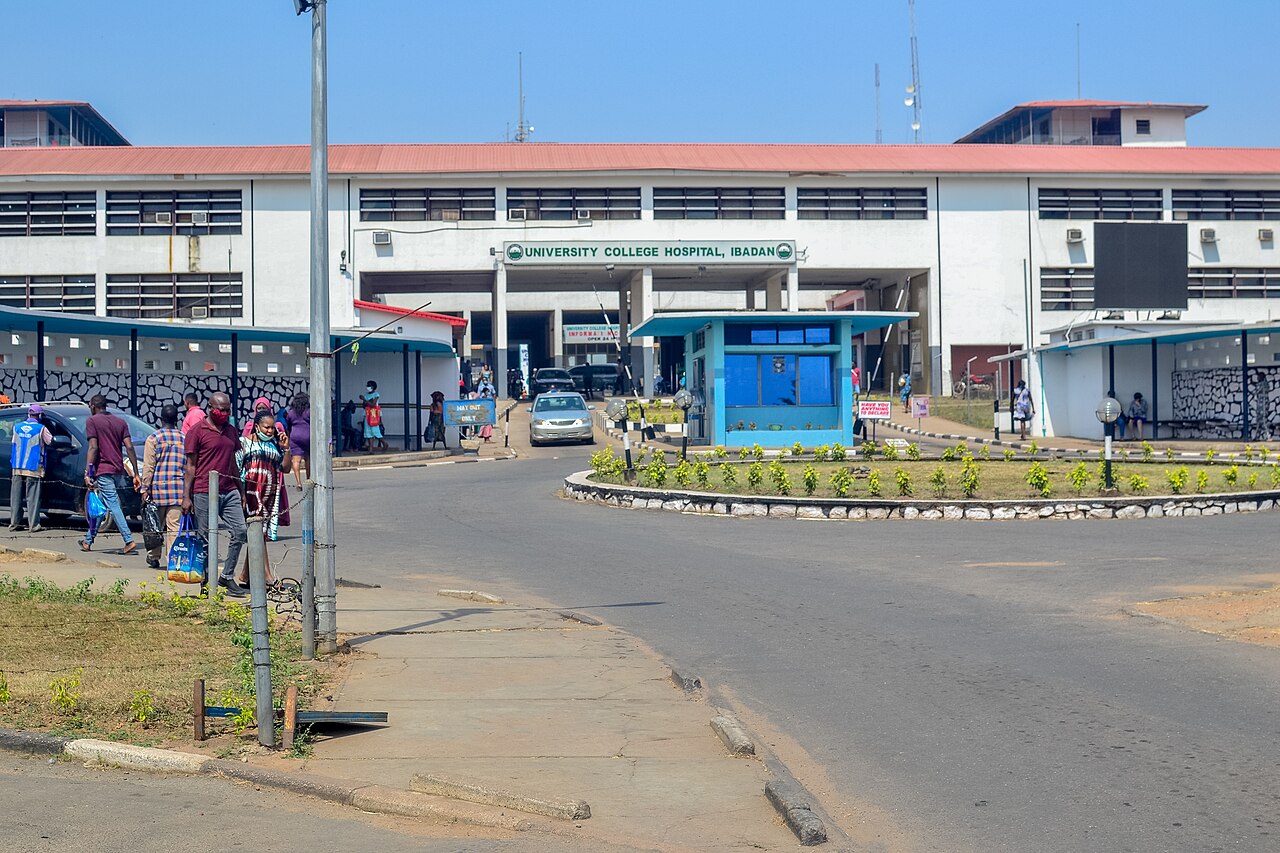Toyin Falola
This is a story about the University College Hospital, Ibadan. Where to start a painful story is complex, perhaps from the most obvious. Health is wealth, and it is not only a statement in vain to uplift people’s commitment to their well-being but also the cornerstone of the future of any nation that has any good thing to do. So, as it is wealth to individuals, it is also the assurance of wealth to society. It might be challenging to say that the Nigerian healthcare system still stands as a symbol of hope for the future because of the deplorable state it has been left in and the non-responsive attitude of the government and the country’s stakeholders.

Hospital_gate%2C_Ibadan8.jpg/1280px-University_College_Hospital_gate%2C_Ibadan8.jpg
The centre point of democracy is far from the elections we run and the fancy policies we make. Still, ordinary people get access to basic amenities, and when they have such access, they get to enjoy at least a minimum standard of quality. Healthcare is not a negotiable sector in every society, even far back in the history of man. For it to be accessible to people and be capable of providing the essential services needed, it must be well catered for, reinforced with the right amenities and infrastructure, driven by experts in quantities required by the people, and be of good state at every point in time.
Understandably, many of these primary amenities have been dominated by private owners for individuals who can afford private services, especially in the health sector, but, unfortunately, the public institutions have been left to degenerate, and the few who work are essentially incapacitated.
The problems facing the Nigerian healthcare sector are numerous. First is the state of infrastructure made available to public hospitals in Nigeria. Most of these buildings are old structures that cry for either replacement, reconstruction, or renovation. The wards, environments and roads that lead to them reek of butchered hope of survival. Patients are turned back to their homes uncared for because there are not enough beds to admit them. The others were admitted under the most unreasonable conditions and situations.
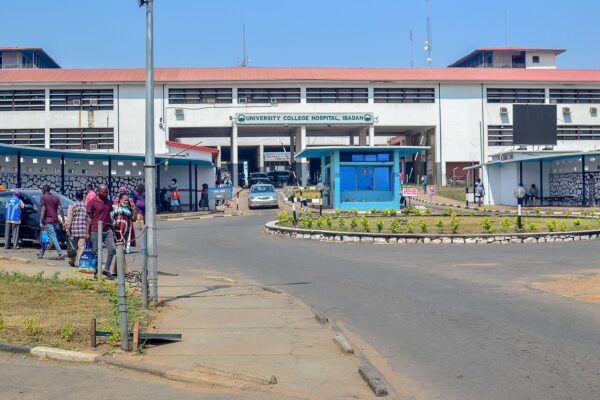
Hospital%2C_Ibadan.jpg/1280px-University_College_Hospital%2C_Ibadan.jpg
Worse are also the conditions of the primary healthcare centres (clinics) that are supposed to serve people in the rural areas and decongest other big hospitals by treating immediate health challenges and needs. A video made the round on the internet showcasing this sorry state when Chinonso Egemba, popularly known as Aproko Doctor, paid a visit to a primary health care centre where the whole centre has just one incomplete set of forceps used on all kinds of patients. There was also no access to electricity as the nurses were made to use the light from their phones to take deliveries in the dark.
Well, this is not just a case that happens in healthcare centres or clinics that are in remote areas; the public hospitals in the urban centres are also deprived of these basic amenities, and infrastructural degeneration has started killing both patients and health workers. The nation was thrown into sadness when Dr. Vwaere Diaso of the Lagos Island General Hospital, Odan, was killed in a malfunctioning elevator which fell from the 10th floor of the hospital. News gathered that this problem had been complained about several times, but no attention was paid. These hospitals face different difficulties and various issues, and the Nigerian government has failed to recognize or remedy the situation.
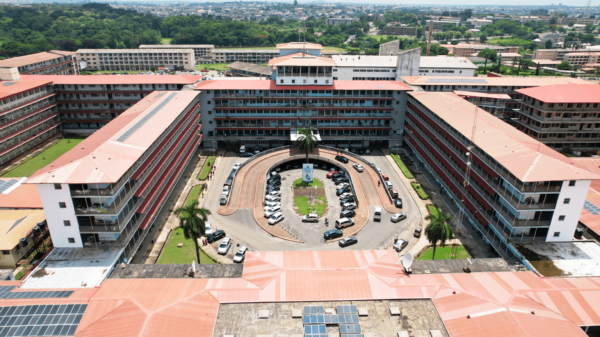
Now, we have thought of the worst that could happen to the health sector: the constant reduction of practitioners, the lack of facilities, laboratories and theatre rooms, the unspeakable and ridiculous pay, and the reoccurring industrial actions by the medical practitioners due to non-payment of salaries and remunerations. But we have not thought of the degree of problems arising from the lack of electricity supply at the medical centres. It is even rather sad that the University College Hospital (UCH) is on the verge of setting a record for hospitals in darkness for the most days. The blackout has reached 90 days since writing this piece, with no hope of restoring power.
The UCH is a testimony of the once-revered institution, which has been a source of national pride for years. The situation has sparked widespread public outrage and disapproval. Students at the College of Medicine and other studies of the University of Ibadan who reside within the facilities staged protests after various attempts to get the government’s attention proved abortive. Once a beacon of medical excellence, UCH is under the strain of infrastructural collapse and now struggles to uphold its legacy.
Electricity is the lifeblood of any hospital. It is essential to power life-support machines, surgical equipment, diagnostic tools, and refrigeration for vaccines and medications, the heart of modern medical practices. As such, a single blackout can lead to the loss of life-saving drugs, put a hold on surgical operations and cause the failure of vital machines like ventilators and dialysis equipment owing to epileptic power. This experience translates to a precarious patient situation, meaning the difference between life and death. In a hospital like UCH, which caters to thousands of patients and trains future medical professionals, the absence of power, as analyzed above, could mean far-reaching consequences for concerned parties.
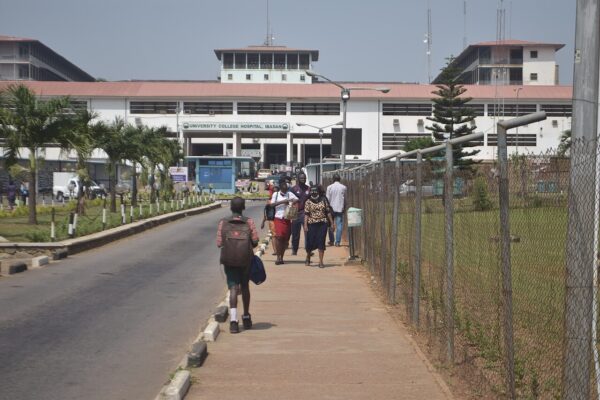
COLLEDGE_HOSPITAL%2C_Ibadan_3.jpg/1280px-UNIVERSITY_COLLEDGE_HOSPITAL%2C_Ibadan_3.jpg
This regrettable experience has forced staff members, including doctors and nurses, to improvise under perilous conditions, sometimes using alternative power sources like torches and phone flashlights to perform critical tasks. Sometimes, the hospital has to provide electricity, but the limited financial resources are an even more significant challenge.
So, I asked around for the cause of the blackout, and I was surprised to discover that the hospital had a large electricity debt that the suppliers could not afford to keep supplying them. Hearing about this development left me devastated and disappointed. UCH was the evidence of African hope for medical advancement and good healthcare services. In the past, leaders and important persons worldwide would troupe in to be treated at UCH.
The ongoing crisis reflects more profound systemic failures. Despite being Africa’s largest economy, the country currently allocates an embarrassingly low percentage of 5% of its healthcare budget, leaving hospitals with outdated infrastructure, unrealistic budgets and unreliable power grids. Compounding this issue is the inefficiency of the national power grid, where frequent outages have become the norm rather than the exception.
One would wonder how the great has fallen and how the situation at UCH currently mocks the country’s healthcare sector. If these could happen to Nigeria’s most prominent and often most reliable medical institution, how many other medical facilities would be available? This casts doubt on the nation’s commitment to the overall welfare of its citizens, undermining the country’s potential to attract foreign investment in its healthcare sector. Compared to other parts of the world, a country like Nigeria in the international space risks being seen as unwilling or unable to meet basic standards like power for its citizens, further alienating potential donors and partners. For a country that aspires to be a regional leader, the state of its healthcare institutions paints a grim picture of its reality.
While the general problem of the nation’s health sector keeps being a trouble for all of us, there is an urgent need for the country to act. The government must revolutionize the electricity supply in significant healthcare centres to ensure they are not cut off and made sustainable. First, the situation in UCH must be investigated; my best bet is that the resources supplied are insufficient to even cater for electricity.
As stated earlier, this is a UCH issue and a national challenge. The government must first prioritize the health sector and explore private-public partnerships for sustainable health sector development, especially the electricity supply. This is because the private sector in most Public-private collaborations can mobilize resources and expertise to develop independent hospital power systems. Renewable energy companies can work with the government to install and maintain solar grids, wind turbines, or biogas plants, ensuring that hospitals have the necessary reliable power. Community involvement and sustained advocacy from civil society organizations and the media can drive accountability and push for much-needed reforms.
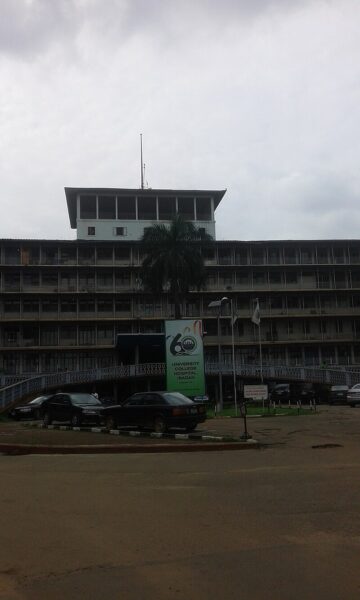
College_Hospital_Ibadan%28First_teaching_hospital_in_Nigeria%294.jpg/300px-University_College_Hospital_Ibadan%28First_teaching_hospital_in_Nigeria%294.jpg
Failure to act will have dire consequences. The continued exodus of healthcare professionals will deepen the crisis, leaving hospitals understaffed and overwhelmed. Patients who cannot afford private care will face even more significant risks, with preventable deaths becoming increasingly common. Beyond healthcare, the persistent power issues highlight systemic dysfunction, fuelling public frustration and potentially leading to social unrest. Moreover, the inability to address these challenges deters international support, as donors and investors are unlikely to engage with a system plagued by inefficiencies and corruption.
Addressing the power crisis in Nigerian hospitals requires a multifaceted approach. In the short term, hospitals need immediate interventions like functional backup systems, including solar panels and inverters. Long-term solutions must involve overhauling the national power sector to provide stable electricity. Investments in renewable energy and independent hospital power plants can create sustainable change. Additionally, policy reforms must ensure that funds allocated to healthcare infrastructure are used as intended, with strict accountability measures to prevent mismanagement.
But more urgently and, most importantly, light up UCH!
